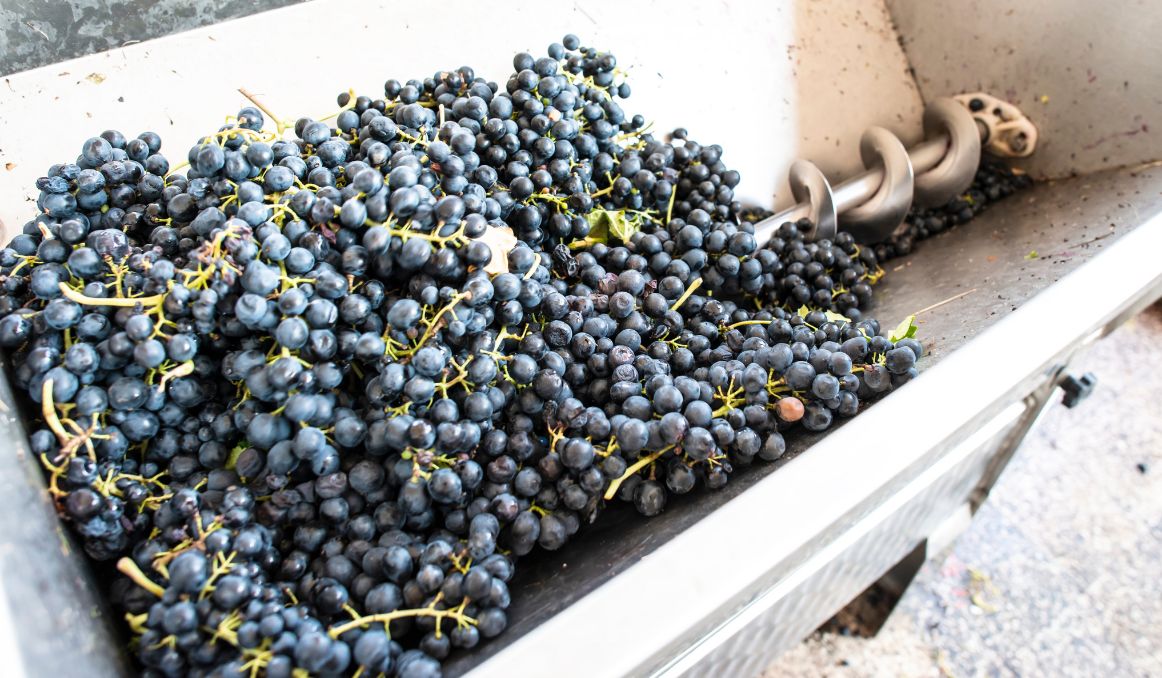What Kind of Wine Is Unfermented? Complete Guide
Currently, the world seems to be going through several different elimination diets at the same time.
We’re all either gluten free, alcohol free, or sugar free. And don’t even get started on dairy free, vegan, or keto. Those are entirely different subjects.
But most foods today on the shelf offer at the very least those options, depending on where you shop. You can get beer, wine, dessert, and a meal all without added sugars, without gluten, and/or without alcohol.
But how do you get alcohol free beer or wine? And what’s the point, anyway?
It begins with the fermentation process. The fermentation process begins, of course, with yeast.

Yeast
The bottom line is this: without yeast, there would be no alcohol. Fermentation, when it comes to beverages, anyway, means alcohol. No yeast, no fermentation, no alcohol.
Yeast is a single celled eukaryotic living organism that is billions of years old.
It’s true.
Yeast is a kind of fungi, and fungi were the first living organisms on earth. And as earth is about four and a half billion years old… well, you do the math.
Yeast is old.
How did it manage to live so long when so many other species have died off?
Well, first, it has one function, and it keeps that function super simple. It seeks out sugar and it converts sugar to alcohol and carbon dioxide to stay alive, energetic, and actively reproducing. Further, its eukaryotic nature helps. Its nucleus is enclosed, and it has well defined chromosomes, which means that while it may be single celled and have one simple function, it is actually a complex life form.
It has managed to stay alive and thrive for all this time by being virtually everywhere at all times. It is ready to pounce as soon as it senses the presence of sugar.
Wine

Well, what’s more sugary than grape juice?
It seems that wine has been around perhaps even longer than humans have. Across cultures, civilizations, and across species, wine is indeed the nectar of the gods.
Anthropologists have discovered that monkeys make their own wine, which means it is likely that our shared ancestors with monkeys were making wine long before humans were a blip on the evolutionary radar.
All that is needed is grapes, or another ripening fruit, and time.
Monkeys today use all kinds of fruit and even use palm syrup.
They simply pick the fruit at its ripest and then allow the fruit or the syrup to sit out for several days, at which point the yeast attacks the sugars in the fruit and converts them to alcohol and carbon dioxide.
Humans have been doing the same thing with wine for as long as we have been humans, by all accounts.
The process is simple.
Pluck grapes at their ripest and sweetest, crush them, and leave them sitting out.
Literally anyone could make wine.
Whether you want it to or not, yeast will find that grape juice you have crushed and make your wine for you.
Today, we use the term “wild yeast” for the yeast that is naturally occurring and fermenting wine, beer, or any other food or beverage without being intentionally added.
In wineries, the process is not much different from what anyone can do at home, or what any monkey can do really.
Wine becomes wine from grapes because of the fermentation process instigated by yeast.
So, is grape juice just unfermented wine? Yes. Yes, it is.
Unfermented Wine versus Non-Alcoholic Wine

When it comes right down to it, unfermented wine means the grapes were never exposed to yeast as by its very nature fermentation requires
yeast. Thus, if you have no yeast, you have no fermentation, and you have grape juice, or, sure, you can also call it unfermented wine.
But what is most likely happening when people refer to unfermented wine, or ask questions like “is unfermented wine alcoholic?” is that some confusion is taking place between alcohol and fermentation.
You cannot have truly unfermented wine. It’s just grape juice. Wine, by definition, is fermented grape juice.
But! You can have non-alcoholic wine.
That’s right. There are actually several ways to extract the alcohol from wine once it has been fermented, or even manipulate the fermentation process so that the alcohol content is very low.
To make non-alcoholic wine, you would follow the same process as you would to make wine:
- Crush grapes
- Add yeast
- Allow to ferment
- Filter out all sediment
But instead of serving that wine to guests, you would now extract the alcohol created.
The first and most obvious way to remove the alcohol is to boil the wine, which will burn off all the alcohol.
Another way is to put the wine through reverse osmosis, a process that involves pressing the liquid through a sort of filter that separates larger molecules (alcohol) from smaller ones.
Finally, you can manipulate the fermentation process to end up with a low alcohol wine by choosing less sweet grapes, slowing down fermentation either through temperature or pressure, or simply not adding any sugar to the juice beforehand (yes, some winemakers add sugar to increase alcohol content). All of these approaches will lower your ABV in your wine.
But, in the end, you will always have fermented wine. It’s kind of an oxymoron when you think about it. Fermented wine is redundant as wine is by its nature fermented.
So, it really depends on what you are looking for – unfermented wine or non-alcoholic wine. The first one you can get at pretty much any market. Just look for the label that says “grape juice.” The second is a little harder to find, but, thanks to more and more elimination diets, not impossible!
Cheers!
Passionate about the beer and/or wine making process? So are we! If you’re interested in finding out how you can use our technology to control fermentation and monitor your yeast, save work hours and improve the cost-efficiency of your business, drop us a line at [email protected] or check out our product pages:
- Oculyze BB 2.0 (Better Brewing) Yeast Cell Counter App + Hardware
- Oculyze FW (Fermentation Wine) Yeast Cell Counter App + Hardware
Sources:


